|
Learning a few key skills will
make your boat trips stress free
Some Links
http://www.cruising.sailingcourse.com/docking.htm
http://www.cruising.sailingcourse.com/navigation.htm
http://www.cruising.sailingcourse.com/communications.htm
Spring Lines
Approaching the
Dock – Often wind an current can make it hard to
get alongside a dock with the large windage of a
Mac. Getting a line to work against on the
dock can make all the difference. Our
preferred method is docking with a bow line shown
below.
If you end up with
helpers on the dock be sure to give clear
instructions about what you want done with any line
you pass them. I recommend you have them put
the line around a cleat and give the end back to
you. This puts you in charge of what happens
with the line. If something goes wrong with
the approach you are able to free the line for a
quick get away.
We carry a special
50' line for use as a docking spring line. It
is long enough to go from the front of the boat to a
cleat on the dock at the back of the boat and back
to the front of the boat if need be. It's also
long enough that you can hold the two ends and throw
the middle over a dock cleat if need be.
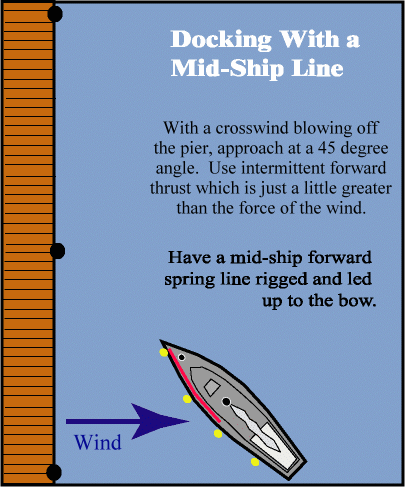
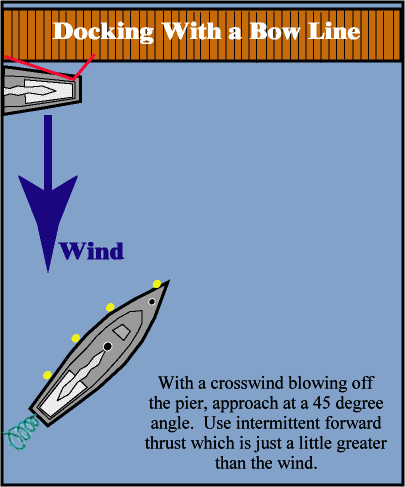
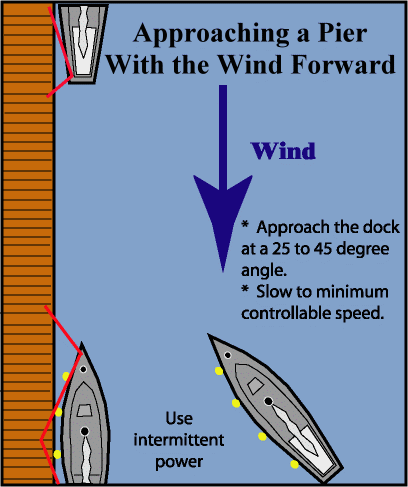
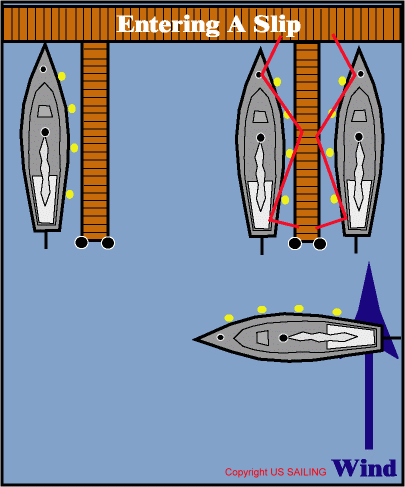
Leaving the Dock
– Wind or current can pin your boat to a dock making
departing difficult, using a spring line makes
it simple. We again use our 50' line that can be
looped around the dock cleat and brought back to the
boat allowing us to easily slip the line free of the
dock once the boat is clear. We prefer the
"Aft Spring Line" method shown below.
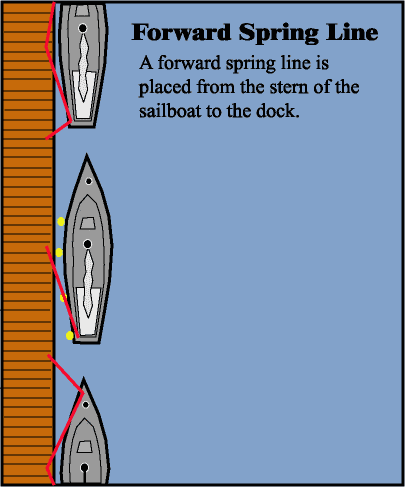
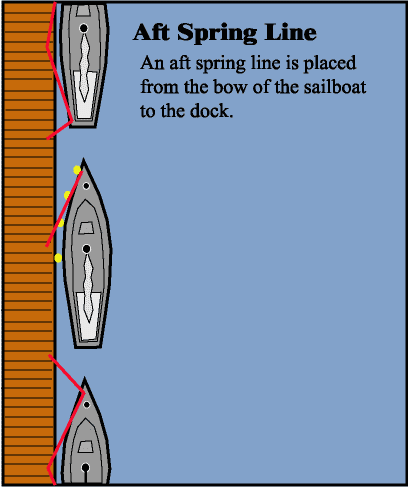
Dock Hooks
Getting a line to the dock to use as a
spring line can at times be a challenge. A dock
hook can make this a lot easier. There are a
number of good commercial products or you can do what we
did and make your own.
Anchoring
We carry and use 2 anchors often.
The number one complaint I hear about this is that your
lines can get tangled if you spin. Yes they do,
but it is no big deal. I've never had a problem
sorting this out when pulling up the anchors.
You'll also sleep a lot better knowing that your boat
isn't going to go anywhere no matter what the wind and
current does.
Using two anchors allows you to reduce
(or in some cases eliminate) the size of your swinging
circle. This is particularly useful in a Mac.
With our very shallow draft we can get inside almost any
other anchored boat. There is usually always a
place for our boats where other boats can't go, but
often the space is limited. Setting two anchors
will allow you to park the boat in areas that can't be
used on one anchor.
We often set our anchors in a variation
of the method shown below. I will set one anchor
into the wind, then fall back to the maximum length of
that rode. There I will set the second anchor.
I then pull the boat back in on the first rode while
paying out the second rode. When in the center I
cleat off both rodes with just enough slack to account
for any tide changes. In essence I have just
created a fixed spot (like a mooring buoy) around which
my boat will rotate. It keeps the boat parked
precisely where I want it.
Up here in the NW another great way to
'Park' in a spot is to use a variation of the
'Mediterranean Moor'. Rather than a dock behind
the boat you use the shore. We carry a 400' poly
line just for this use. Once the anchor is set out
front and we back into the shore, we run the shore tie
line to the beach, around something secure (tree or
rock) and then back to the boat. Up in Canada many
of the marine parks even have rings all around the shore
just for this purpose. This keeps the boat parked
exactly where you want it with no swinging at all.
When it is time to leave you just release the tail of
the shore line from the boat and wind it back up.
There is no need to go to the beach to retrieve the line
as there would be if a shore anchor was used.
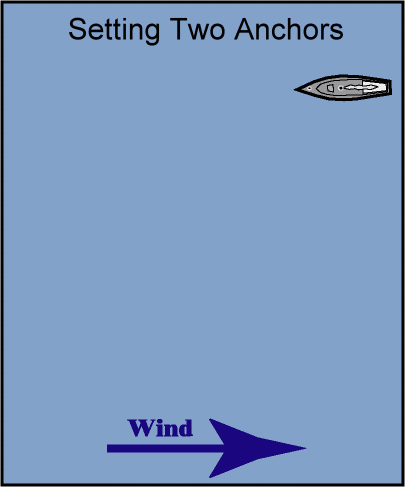
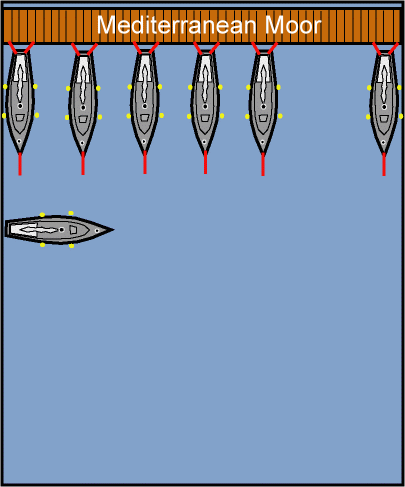
|





